Wouldn’t you know it?
Another dietary controversy that challenges everything we’ve been led to believe in the recent past about what’s good for our health and our planet.
There’s a grassroots movement afoot that’s gaining support on many fronts for the idea that eating locally grown foods is somehow “better” than eating organically produced goods.
[the_ad id=”18450″]
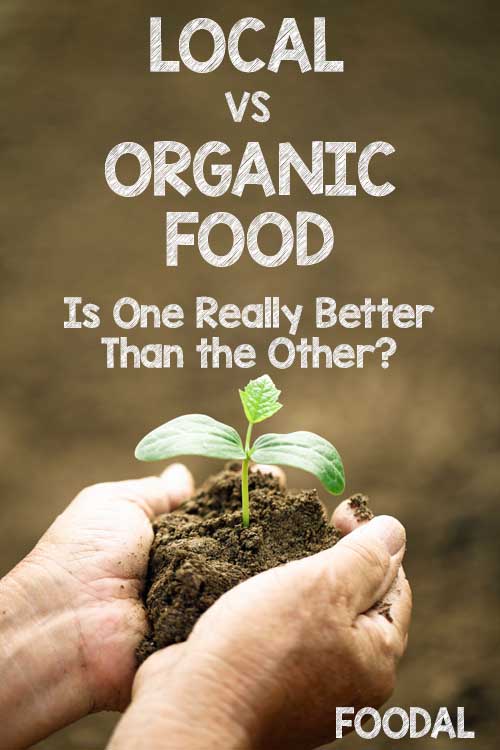
But is this really true? Are locally grown, sustainable foods usurping organics as the crown jewel of farming practices?
And isn’t eating organic supposed to be the ultimate for personal and ecological health?
Advocates of organics would certainly have us believe that. But proponents of regionally grown foods would have us believe that sustainability is the key to our own, and the environment’s well-being.
So, let’s have a look at both sides of the argument so we can make an informed decision about which camp gets our support – and our consumer dollars.
20th Century Organics
In today’s society, we tend to think of the terms “organic” and “local” foods as fairly new concepts. But really, many cultures have used natural growing methods for thousands of years.
And prior to industrialization, buying locally was the norm – with the exception of goods from the Spice Route, which were out of the price range allowable for most households.
It wasn’t until the advent of refrigerated rail cars in the 1880s that transporting perishable goods long distance became feasible.
Prior to that, shopping for locally grown goods was pretty much the only option available to the majority of consumers.
And while many societies used organic farming practices, in some locales mineral pesticides have been in use for millennia.
The Sumerians used sulphur compounds to control insects 4500 years ago, and “smoking” crops with a variety of agents such as sandarach (red sulphide of arsenic) was used by both the ancient Greeks and Romans to control mold and mildew.
Controlling weeds with salt and oil was another common practice in Carthage and Rome – and a good curse was another favorite herbicide, providing the gods were on your side (1).
In modern times, arsenic-based insecticides were widely used in the 1920s and 30s – until the connection was made between this practice and arsenic poisonings caused by residue left on apples (2).
Early Pioneers
In 1911 American agronomist F.H. King published Farmers of Forty Centuries after an extensive tour through eastern Asia, where he studied the time-honored methods of tillage, fertilization and growing in China, Japan and Korea.
His work would later become a valuable reference in the world movement towards new and improved natural practices in agriculture.
In a 2013 review for the Sustainability Journal at MDPI, Joseph R. Heckman calls King’s work “… a classic with valuable lessons and experience to offer towards teaching modern concepts in sustainable agriculture.”
One of the first alternative agricultural systems of the modern era was developed in 1920 by Austrian Rudolph Steiner, which he dubbed biodynamic agriculture.
It emphasized the interrelation of animals, soil, crops and the farmer as a single entity, with local production and distribution being a key component.
Choosing natural manures and composts over chemical fertilization, and the use of an astrological calendar for planting and sowing, were other integral parts of biodynamics.
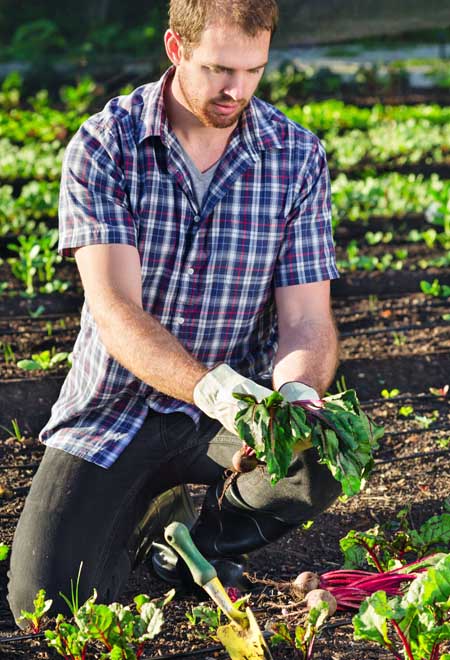
The USDA’s National Agriculture Library credits Lord Northbourne, a.k.a. Walter James, with first using the term “organic farming” in his book Look to the Land, published in 1940.
Based on the theories of biodynamics he used on his land in Kent, he conceived of a farm as a living organism with an environmentally holistic and ecologically balanced approach to agriculture.
British botanist Sir Albert Howard and his wife Gabrielle, a plant physiologist, observed and documented traditional Indian growing practices while working in Bengal, and determined the results were considerably superior to that of contemporary agricultural practices.
Howard’s book An Agricultural Testament, published in 1940, refined these natural practices and proved to be greatly influential on both farmers and scientists of that era.
Howard’s contribution is still referenced today in academic institutions, such as the University of Illinois’ Local Food Systems and Small Farms extension programs.
In 1943, farmer and organics innovator Lady Eve Balfour published The Living Soil in the UK, which quickly became a keystone text for the emerging non-chemical farming movement.
It chronicled the results of her four-year study, The Haughley Experiement, with neighbour Alice Debenham, which was the first of its kind to compare the results of organic versus chemical-based farming.
She was also responsible for organizing The Soil Association, which is still the UK’s leading environmental charity supporting organic agriculture.
The Tipping Point
It wasn’t until after WWII that the manufacture and use of synthetic fertilizers and pesticides became widespread.
Pesticides such as DDT, Captan and 2,4-D (Agent Orange) were effective and inexpensive to produce, and seemed safe for mammals. Indeed, in 1949, Dr. Paul Muller won the Nobel Prize in Medicine for discovering the insecticidal properties of DDT – which greatly reduced the spread of insect-borne disease such as malaria, typhus and yellow fever.
At the same time, synthetic nitrogen fertilizers gained popularity when leftover supplies of ammonium nitrate from munitions factories were converted for use in agricultural applications.
Prohibited by the USDA’s organic control standards, they’re still widely used in conventional agriculture today and are a responsible for a host of environmental pollutants.
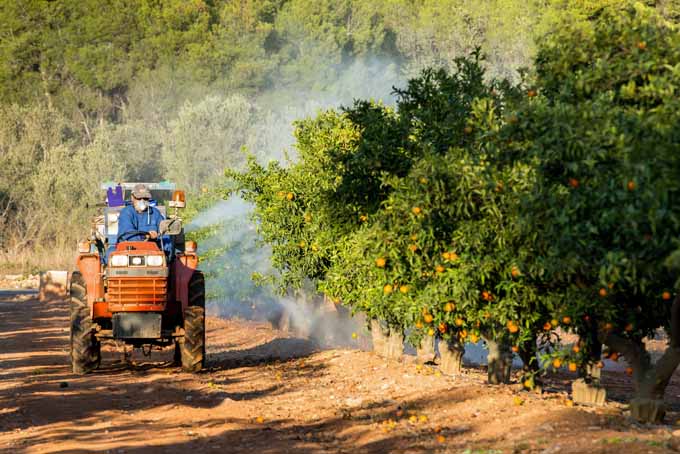
However, with the publication of Rachel Carson’s book Silent Spring in 1962, the devastating effects of widespread and indiscriminate use of synthetic pesticides on the environment could no longer be ignored.
Sensational in its effect, Silent Spring enraged chemical and agricultural lobbyists, and galvanized environmentalists and ecologists – it was the impetus for today’s organic farming movement on a global scale. (Silent Spring refers to the mass die-off of birds after DDT was sprayed to control insects).
Along with the birth of the modern organic movement, farmers’ markets became a valuable component of sustainable, healthy and locally grown foods – and both rose in popularity together.
Organic Farming
Today, organic farming is no longer the domain of small, back-to-the-earth growers – it’s big business and certification isn’t reliant on size, with many organic farms claiming thousands of acres.
With big-box stores like Walmart now carrying organic products, they’ve certainly lost some of their earlier cachet as belonging to a somewhat exclusive domain, even though the prices still place them outside the realm of the majority of consumers.
Nonetheless, natural growing techniques are head and shoulders above those of conventional methods in terms of lightening the load of toxins in our bodies and environmental pollutants.
The synthetic fertilizers mentioned above leach into groundwater, streams and rivers and they are responsible for the dead zones created in lakes and the Gulf of Mexico.
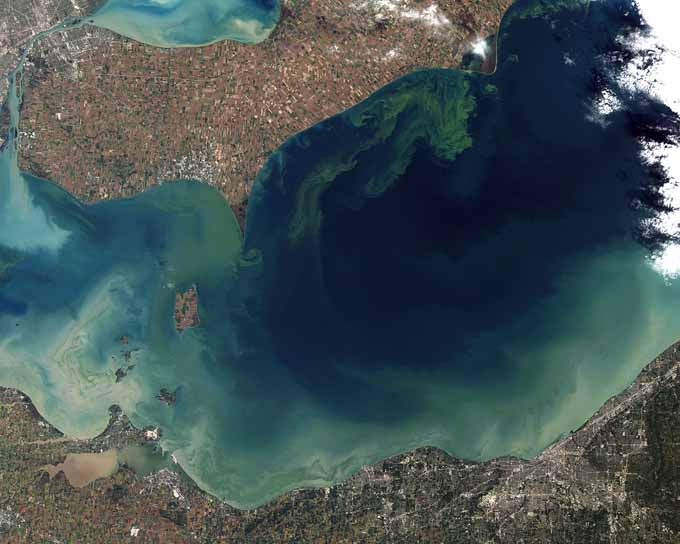
The excessive amount of nitrates that wash into the water encourage algae bloom, which consumes oxygen so that fish and marine life can’t survive.
And fertilizing the soil with ammonia and synthetics reduces micronutrients and minerals in produce, as well as weakening the topsoil.
Moreover, at least one study has shown using manure over mineral fertilization causes an increase in vitamin C, minerals and polyphenols and a decrease in nitrates – and that organic produce tastes better (3).
And of course, organics are GMO free. In 2012, 170 million hectares of biotech crops were grown globally, with the US accounting for 40% – genetically engineered primarily for herbicide tolerance and insect resistance (4).
Additive and pesticide-free farming also encourages biodiversity in local flora and fauna.
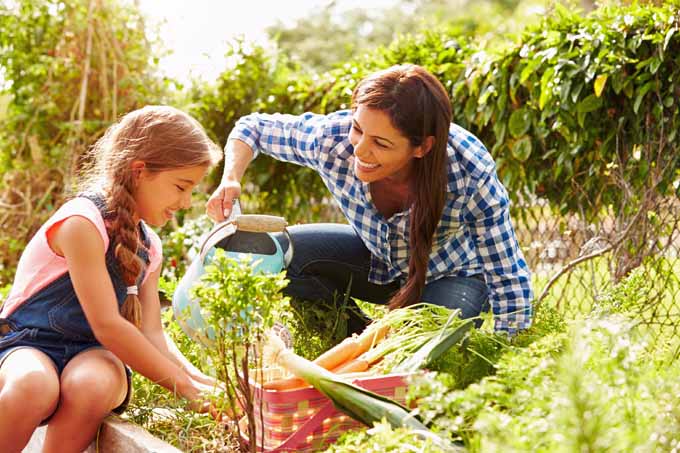
An oasis for birds and wildlife, the presence of beneficial insects, non-toxic seeds and safe groundwater found on these lands partially replicates a natural habitat for indigenous critters, conditions which are not found on industrial, high-yield sites.
However, organic farming doesn’t necessarily guarantee food safety, as the tragic 2006 outbreak of E. coli from tainted organic spinach, with victims in 26 states, made abundantly clear (5).
And certification for farmers can be challenging as well, with conflicting regulations between regional and federal governments.
A lack of support and direction from local governments is often cited as a reason for not certifying, as are inadequate distribution channels to get foods to the consumer.
Also, many organic growers now fall into the category of mega-producers, with profits often going to areas other than where the goods are purchased.
Sustainable, Local Farms
The local food movement’s aim is to create a connection between food producers, distributors, retailers and consumers within the same geographical region.
This connection helps to develop food networks that are self-sustaining and self-reliant, with greater resiliency than those with a dependence on global economies.
Numerous other positives are being promoted as well, such as the improvement in local economies, social and community impact, and environmental benefits.
Locally grown goods offer an alternative to the global food model, which often has food (conventional and organic) traveling thousands of miles before making an appearance in your grocery store.
Transportation costs for moving food long distances factor into the price we pay, and ecological concerns for using a system that relies on fossil fuels are also growing.
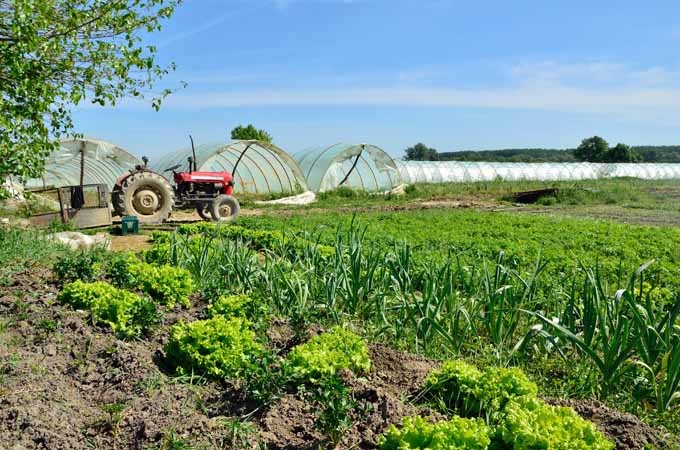
Produce hauled long distances is often picked green and allowed to ripen in transit – which often results in a bland, insipid taste as it hasn’t been allowed to fully ripen on the plant.
Locally grown food can taste better, and it often looks better, too – it’s fresher, as crops are picked at their peak, allowing the flavors to develop fully.
Arguably, it’s better for you due to the reduced time between leaving the farm and arriving at your table, so nutrient loss is minimized. Not only do non-local foods spend more time in transit, they often sit in warehouses before being distributed to retail outlets.
Sustainable farmstead products such as cheese and wine are usually hand-crafted in an artisanal way, rather than a factory environment, and employees are from the region as well.
Livestock products will often be processed in facilities with a close proximity to the farms, and the farmer will typically have a direct relationship with the processing outlet, allowing them to oversee quality. This is not the case with animals processed in larger industrial plants.
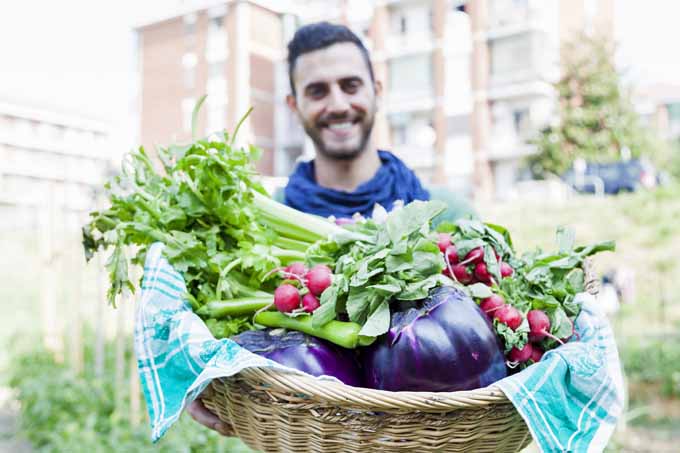
Local food is also touted as being safer, with a perceived assurance that comes from face to face interaction with farmers at a local market, or from seeing the fields and crops worked through the seasons as you drive by.
Buying locally also supports your community and families that live in that community. Farmers that sell their goods at wholesale prices receive payment that’s often very close to the cost of production.
By selling direct to the consumer or neighborhood retailers, the middlemen are eliminated so they can receive better prices for their food.
This encourages farmers and future generations to stay on the land rather than selling to developers, and this brings a healthy contribution to the region’s tax base.
In numerous studies conducted by the American Farmland Trust, farmland creates more of a fiscal surplus than commercial or industrial bases.
And this surplus plays a significant role in helping to offset the shortfall that occurs from residential demand for public services (6).
In other words, cows don’t go to school, beans don’t require policing and potatoes don’t make trips to the emergency room. But farms pay taxes for all those community services, which keeps taxes down for all residents. And this is true for both styles of farming.
Proponents of genetic diversity also fall on the side of the locavores.
In large scale agricultural systems, which many organic growers utilize, plant species are chosen for a uniform ripening period and the ability to withstand mechanized harvesting and packaging, and they need to have a long shelf life.
However, the small scale grower will often plant an array of varieties of the same crop to provide a staggered and longer harvest time, and to produce crops with different shapes, colors and flavors which ensures genetic diversity.
And livestock diversity is often greater with a number of small farms as opposed to a few mega-farms.
Like organic farms, locally grown foods also preserve open spaces, which benefits the environment and wildlife.
A well-managed farm creates its own ecosystem, providing water sources and gleaning grounds for wildlife and migratory birds, and green products perform the very important task of exchanging carbon for oxygen in our atmosphere.
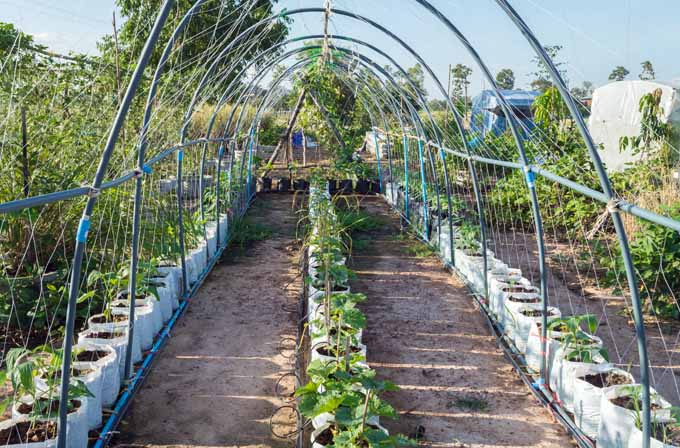
Community growers often provide educational opportunities for learning about agriculture, land stewardship and insights into nature’s seasonal character.
A working landscape, such as those found in regional vineyards and orchards, also contributes in secondary economic activities such as tourism and recreational pursuits.
Of course, just because foods are grown in your neighborhood, that doesn’t mean that they’ve been grown in a healthful manner.
If you’re unsure, ask your farmer about the practices they employ to determine if their produce or livestock meets your standards.
A Tough Row to Hoe
Clearly, both organic and sustainable local farms offer numerous benefits for us to consider when making our grocery purchases – and they often share the same values. This makes choosing a difficult task.
So, hopefully, we’ve given you some food for thought to help with your decisions. Which side of the furrow do you fall on? Let us know what you think in the comments.
References
(1) History of Horticulture, Roman Agricultural History; J. Janek, Purdue University, https://hort.purdue.edu/newcrop/Hort_306/text/lec18.pdf
(2) Farming in the ‘30s, Claudia Reinhardt and Bill Ganzel, http://www.livinghistoryfarm.org/farminginthe30s/pests_04.html
(3) The Organic Centre, State of Science Review: The Taste of Organics, https://www.organic-center.org/reportfiles/Taste_SSR_October_final.pdf
(4) Library of Congress, Restrictions on Genetically Modified Organisms: United States,
http://www.loc.gov/law/help/restrictions-on-gmos/usa.php
(5) Food Safety News, Dole Spinach E. Coli Outbreak, http://www.foodsafetynews.com/2009/09/meaningful-outbreak-7-dole-spinach-e-coli-outbreak/#.Vo84SFJlzfb
(6) American Farmland Trust, Fact Sheet – Cost of Community Services Studies, http://www.smartgrowth.bc.ca/Portals/0/Downloads/COCS_factsheet07.pdf
Unless otherwise noted, photos are sourced from dollarphotoclub.com and are licensed by Ask the Experts, LLC for use. Copyright is held by various independent photographers.
About Lorna Kring
Recently retired as a costume specialist in the TV and film industry, Lorna now enjoys blogging on contemporary lifestyle themes. A bit daft about the garden, she’s particularly obsessed with organic tomatoes and herbs, and delights in breaking bread with family and friends.




Great article. It reminds me of a book I read a few years ago by Barbara Kingsolver named Animal, Vegetable, Miracle. If I remember correctly the author eating locally grown produce. I’m inspired now to find the nearest farmers market to my home.
A very good book, about her family’s efforts to eat local for a year… every bit helps. Good luck sourcing a nearby market phoenix!
Hey, really good article, made me glad I changed to eating locally and organically three years ago.
Even since The Horse Meat Scandal, I’ve been eating locally from a farmer only 20 miles away from my house. I prefer supporting my local economy, instead of my money going into some fat cat’s back pocket! I’m also sure that no harsh pesticides are used, as I have to drive by one of his fields on the way to work and I often stop to have a look.
Another thing about local farms distributing to a local independent store, is that they appear more homely. You know that time, care, and attention has been put into every little detail of the produce.
Meanwhile, farmers working for supermarket are often under demanding quotas that force them to rush out their produce.
You’ve given lots of good reasons to shop locally Antonr, and if you can shop local and organic, even better. Thanks for sharing.
This is a very thorough and thought out, well researched comparison. I am very interested in the differences between ‘organic’ and ‘local’ food, as I do garden some of my own fare. Thank you for making this an easy to read, detailed post.
I will definitely browse through and read more of your posts.
Glad you enjoyed the post HanaDyad. Growing your own is the ultimate of course, but even with that we usually have to supplement from the shops to fill out our menus – so it’s nice to be able to make an informed decision.
I don’t really trust the label “organic” since They could still put preservatives under the guise of it making the food somehow better. That’s why I prefer to grow my own crops. I may not get the same amount or perfect quality as in the stores, but I can guarantee that no chemicals will touch my small crops and it is truly all natural.
Most home grown fare doesn’t look ‘perfect’ SA, but it certainly tastes better. And you have full control over how your crops are treated – and that’s an extra bonus in my books!
Ideally I would love to have organic all the time, but it’s not possible with the weather and also the prices. I do try to buy locally sourced produce, because I do think farmers need the support. My parents grow their own, but it’s a short season and they do well and pick lettuce, spring onions and marrows from the garden as and when they need it.
Sadly not everyone can have their own garden, but allotments where people can grow their own is becoming popular again.
And in some shops the selection of organic goods isn’t that great either. It is nice to see the community garden/allotment movement gaining strength again… makes me think of my Granddad’s ‘plot’.
Organic certified products can still use pesticides, herbicides, and fungicides, they’re just not synthetically made. These can be better or worse for the environment than synthetic options. Organic does’t mean it’s better tasting nor that it promotes sustainable agricultural practices that promote biologically diversity. It is debatable whether organic is significantly better than conventional produce. Local, biodynamic, agriculture is where it’s at. Less pollution and pesticides, it supports the local economy, and creates thriving ecosystems and communities. Local is my first choice.
All valid points lebrennan. Organic growing only has to meet the guidelines laid down by the regulatory bodies, and it certainly doesn’t guarantee better practices. Thanks for your insights.
Honestly, I think we should be eating as much local AND organic as we can. Eating locally grown food can allow you to eat seasonally and most food, even ‘organic’, in your supermarket produce section has a high carbon footprint from it’s transport. Not to mention there’s a lot of it that’s harvested before it’s ripe and ripened artificially, which I’m not sure really makes a difference in it’s nutritional value but I think it’s something people should know as a jumping off point for their own research.
Add to this that just because something says it’s organic, that doesn’t mean that it fits with most of our definition of wholesome. Food labeling is shady business these days.
Still, I think we should focus on doing our best, not beating ourselves up when we can’t do everything perfectly. Eat as well as you can! 🙂
Excellent points Nancy, organic does not necessarily mean wholesome! And we do rely a great deal on what the labels tell us despite some pretty dodgy practices. But as you say, we can only do our best with the resources at our disposal. Thanks for your comments.
Organic food is said to be the best. As for local food, you might never know what has been added to it. Its also believed to contain more important nutrients compared to local food.
That’s why our individual inquiries are so important elly – it helps to keep organic and local growers, as well as the governing agencies, accountable for their practices.
Excellent article! I came away with many facts that I hadn’t known and hadn’t considered before. In my own case, this is a topic that i have become very interested in over the past year and a half. I have changed the lifestyle of my family when it comes to what we eat and it’s been such a good change!
I have to say that I spent far too many years not thinking about what I was putting into my body and I’m thankful that I didn’t have to suffer with illness for those poor choices. I’m crossing my fingers that it’s not too late to reverse any ill effects it may have caused.
I happen to live in an area where I can have the best of both worlds because there are organic local farmers and a huge market at which to buy what they offer. It has made a world of difference in the way I plan meals
It’s a topic becoming more prevalent and important to the ‘average’ household Kate. And the more knowledge we can gather, the better our choices will be. Thanks for sharing your thoughts.
I love the history in this article. Some people seem to forget the history of our food and may in the younger generations just think the way it is done now is how it has alway been done. Bringing up the idea of growing your own or having local small farms to provide for the surrounding area seems foreign to them. Also touching on how Big Agriculture messes up the harmony of the environment is another big thing that I think many miss when it come to them deciding whether organic or local is the way for them. I believe this life is about doing for others and supporting sustainable growing methods is a way to do for your community, friends, family and the planet. Doing so provides a healthier family, community, planet and so on.
Agreed bfullerdc, a little background helps us to understand the ‘big picture’. And also empowers us to have a dynamic interaction with the industries we support with our purchasing power. Thanks for your comments.
I don’t see why you can’t have the best of both worlds. Some places don’t have the climate needed to grow some of your favorite fruits and vegetables. Sometimes what you want is out of season. This is when going to the store comes into play. Also, I do like the points given out about shopping locally. It does make a difference when you don’t have to deal with the “middle man”.
The best of both worlds is certainly the ideal Jasmine, and we do have to work with what we’ve got. Thanks for your thoughts.
Organic farming is the oldest kind of agriculture in reality, as this was what people practiced before the arrival of chemical fertilizers and modern methods. The only concern is that the yield from organic growing is less when compared to conventional. Although much more expensive I prefer naturally grown as it is the safest and the healthiest food one can have. I think if everybody implements a natural growing system it might cost a little bit cheaper and we could remove the idea of chemical fertilizers completely. It might feel a little more of a burden for some people, but that is what you are paying for your a better quality and better tasting food. Like you said locally grown and raised organic produce and meat would make a huge impact on the price, availability and freshness of our food supply.
Good points sharatharadhya. And while the cost to purchase organic might be higher right now, at some point eating healthier is going to result in a reduction to health care costs due to a reduction in diet related illnesses. Would love to be around in a couple of hundred years to see how it plays out!
The flavors added to local food are the ones that make them unhealthy for human consumption. People are always deceived by taste not knowing the benefits a particular meal has. I still stand for the organic option due to lots of reasons.
I’m not sure about your meaning for adding flavor to locally grown foods elly, but addiatives in processed foods are certainly deceptive!
Much of it on any side is pontificating and posturing without much substance to back claims up. The anti-GMO group that is mixed in with both of these crowds is a prime example of what I’m talking about. It is mostly a bunch of FUD (Fear, Uncertainty, Doubt) that can be dispelled with some simple facts if people would just listen.
P & p seems to be a byproduct of any group trying to get a larger piece of the market nytegeek, with facts relegated to the background. Thanks for your thoughts.
If I had the option, I would buy from my local sellers – I think that it’s important to support small businesses.
Not to mention that such veggies would be healthier and cheaper. Too bad that there are no companies like this were I live, so i have to buy fruits and vegetables from stores.
Thanks for weighing in Elfprincess. Sounds like there’s a business opportunity in your area…
To be honest I’ve always heard that the term organic didn’t really amount to much and had always tried to stick to local. I love how much information you’ve put in here, especially with such a thorough history on the use of pesticides. I suppose now I can give organics another trying, seeing as the more people who want encourage more farmers to take that route. ☺ It’s certainly important to be informed over what you’re putting into your body, so it’s nice that you’ve done the research and made yourself an informed consumer who doesn’t take the decision lightly.
Glad you enjoyed background info sterlingjay0123, and thanks for sharing.
I feel like local farming is good for low prices and freshness, but organic is good because there are no harmful chemicals going into the food being gown.
Yep, there’s good points for both sides of the debate Katekatecupecake. Choosing’s the hard part!
I would like to think my local farmer is my best bet..at least I can see them..look them in their eyes when I ask questions about their products. I go to my local farmers market quite a bit and I love it. I think organic is a valuable commodity but are they really organic is what i find myself questioning sometimes. Local farmers are more convenient and trustworthy because if I wanted to I could most of the time go to their farms and see for myself.
The trust factor is certainly an important component of our decision making processes sheebah7. It might only be based on perception, but knowing the neighbors that are growing our food does seem to add a dimension of accountability. Thanks for your comments.
There isn’t any real science or facts supporting most of the anti-gmo madness people seem to be affected by, but pesticides are another matter. Organically grown food is attractive for it’s pesticide free nature. As for local, I think it is important to support locally grown foods as well, but not for most of the reasons laid out in the organic vs. local argument.
Pesticide free, locally grown foods would be the ideal nytegeek… thanks for your comments.
Great article and covers in detail something I have been discussing a lot with friends recently. Local and organic is what we would all love but if you don’t live near a farmers market or live in an area that only has a limited number of items produced locally then imported organic is better. Whichever way you can maximise your nutrients and keep the amount of processing and transportation to a minimum is best.
Astute point Eatwell, it’s about doing the best with the options at hand. Thanks for your thoughts!